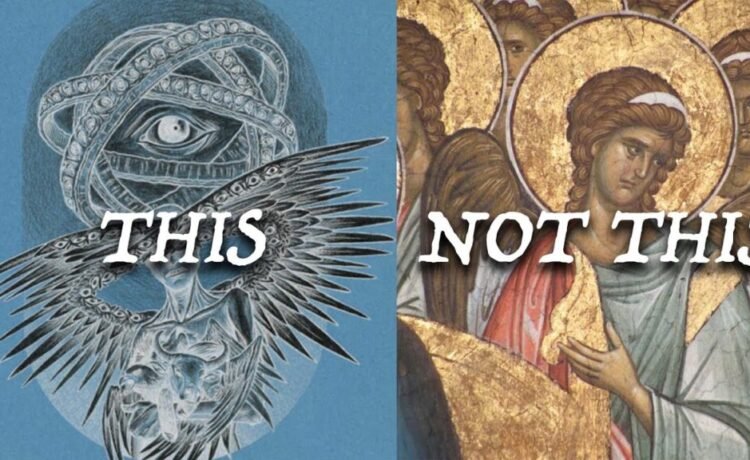Nearly 70 percent of Americans believe in angels, at least according to a statistic often cited in recent years. But what, exactly, comes to their minds — or those of any other believers around the world — when they imagine one? Personal conceptions may vary, of course, but we can be fairly certain of one thing: most of them will bear no resemblance to the angels actually described in the Bible. Here to give us a sense of their appearance is Tommie Trelawny, creator of the YouTube channel Hochelaga, whose video above explains “Why Bible Accurate Angels Are So Creepy.”
Far from the winged, white-robed embodiments of gentleness we might know from greeting cards, says Trelawny, the angels of the Bible, and specifically the Old Testament, are “horrifying abominations” who would be more at home in an H. P. Lovecraft novel. Angel, from the Greek angelos, which itself comes from the Hebrew mal’akh, means “messenger.” That implies an innocuous-enough set of duties, but then, you may recall the story of Passover, with its angel who slaughtered the Egyptians’ first-born sons; or the angel who “struck 70,000 Israelites to death”; or the angel who “singlehandedly killed 185,000 Assyrian soldiers in one night.”
The Bible doesn’t say anything about those angels having wings. “In fact, they look like any ordinary person,” as do even the most famous examples like Gabriel, Raphael, and Michael. In the grand heavenly scheme of things, such humanoid angels, or Malakh, don’t rank particularly high. Still, they’re one rung above the Cherubim, who turn out to be less like Cupid and more like “the mythical beasts of ancient Mesopotamia, especially the Babylonian Lamassu, which has the wings of an eagle, the body of a lion, and the head of a king” — with a more-than-passing resemblance to the Egyptian sphinx or the Hittite griffin. Even the popular image of the pudgy, flying cherub, which emerged much later, seems to have been imported from Greek and Roman myths.
Ranked above the Malakh are the six-winged Seraphim, or “burning ones.” The origins of these “caretakers of God’s throne” are suggested by the Hebrew word Saraph, meaning “a venomous serpent in the desert,” much like the cobra whose image adorned the head of the Egyptian pharaoh. As for the Ophanim, it’s anyone’s guess where they come from. Taking the form of a wheel within a wheel floating in the sky, its rims lined with eyes, an Ophan would make for an intimidating sight indeed: perhaps a representation of the wheels of God’s chariot, perhaps the result of “the prophet ingesting a psychedelic plant,” and perhaps — according to a fringe theory — visitation by a spacecraft. Whatever the evidence for those explanations, it’s safe to say they’re not quite as comforting as all those placid celestial harpists.
Related content:
How Our Depiction of Jesus Changed Over 2,000 Years and What He May Have Actually Looked Like
The Origins of Satan: The Evolution of the Devil in Religion
Behold the Codex Gigas (aka “Devil’s Bible”), the Largest Medieval Manuscript in the World
Christianity Through Its Scriptures: A Free Course from Harvard University
Angels & Demons: The Science Revealed
Based in Seoul, Colin Marshall writes and broadcasts on cities, language, and culture. His projects include the Substack newsletter Books on Cities and the book The Stateless City: a Walk through 21st-Century Los Angeles. Follow him on the social network formerly known as Twitter at @colinmarshall.















